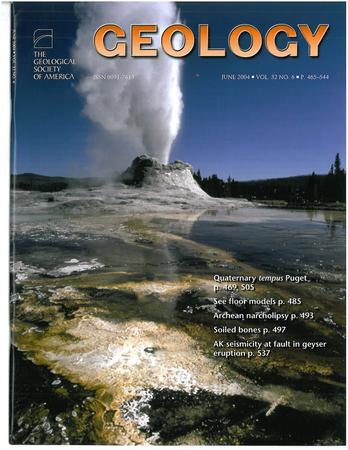Unveiling "too-old" radiocarbon ages at Serapeo (Pozzuoli) enhances understanding of the present unrest crisis at Campi Flegrei caldera, Italy
IF 4.6
1区 地球科学
Q1 GEOLOGY
引用次数: 0
Abstract
The Campi Flegrei caldera, west of Naples, Italy, is currently experiencing volcanic unrest, a process that started 75 years ago. The magmatic origin of past uplift crises has been questioned by studies based on 14C data from marine organisms, suggesting three rapid uplifts; only the last, in the fifteenth century, was followed by the Monte Nuovo eruption (1538 CE). New 14C dating and water composition analyses from the thermal spring in the Roman Macellum of Pozzuoli (Serapeo) show that the two supposed non-eruptive medieval unrest phases are unreliable, because they are based on too-old ages due to absorption of deep 14C-depleted CO2 by marine fauna. The implication of this finding is that the current unrest has a high probability of being linked to the resumption of magma supply to the shallow plumbing system of the caldera, and that this process could result in a renewal of volcanic activity in the area.在Serapeo (Pozzuoli)揭开“太老”的放射性碳年龄,提高了对意大利Campi Flegrei火山口当前动荡危机的理解
位于意大利那不勒斯西部的Campi Flegrei火山口目前正在经历火山动荡,这一过程始于75年前。基于海洋生物14C数据的研究对过去隆升危机的岩浆起源提出了质疑,认为有三次快速隆升;只有最后一次是在15世纪,紧接着是诺沃火山喷发(公元1538年)。新的14C年代测定和对波祖里罗马马塞勒姆(Serapeo)温泉的水成分分析表明,假定的两个非喷发的中世纪动荡阶段是不可靠的,因为它们基于太古老的年代,这是由于海洋动物吸收了深层14C耗尽的二氧化碳。这一发现的含义是,目前的动荡很可能与火山口浅层管道系统中岩浆供应的恢复有关,而这一过程可能导致该地区火山活动的更新。
本文章由计算机程序翻译,如有差异,请以英文原文为准。
求助全文
约1分钟内获得全文
求助全文
来源期刊

Geology
地学-地质学
CiteScore
10.00
自引率
3.40%
发文量
228
审稿时长
6.2 months
期刊介绍:
Published since 1973, Geology features rapid publication of about 23 refereed short (four-page) papers each month. Articles cover all earth-science disciplines and include new investigations and provocative topics. Professional geologists and university-level students in the earth sciences use this widely read journal to keep up with scientific research trends. The online forum section facilitates author-reader dialog. Includes color and occasional large-format illustrations on oversized loose inserts.
 求助内容:
求助内容: 应助结果提醒方式:
应助结果提醒方式:


